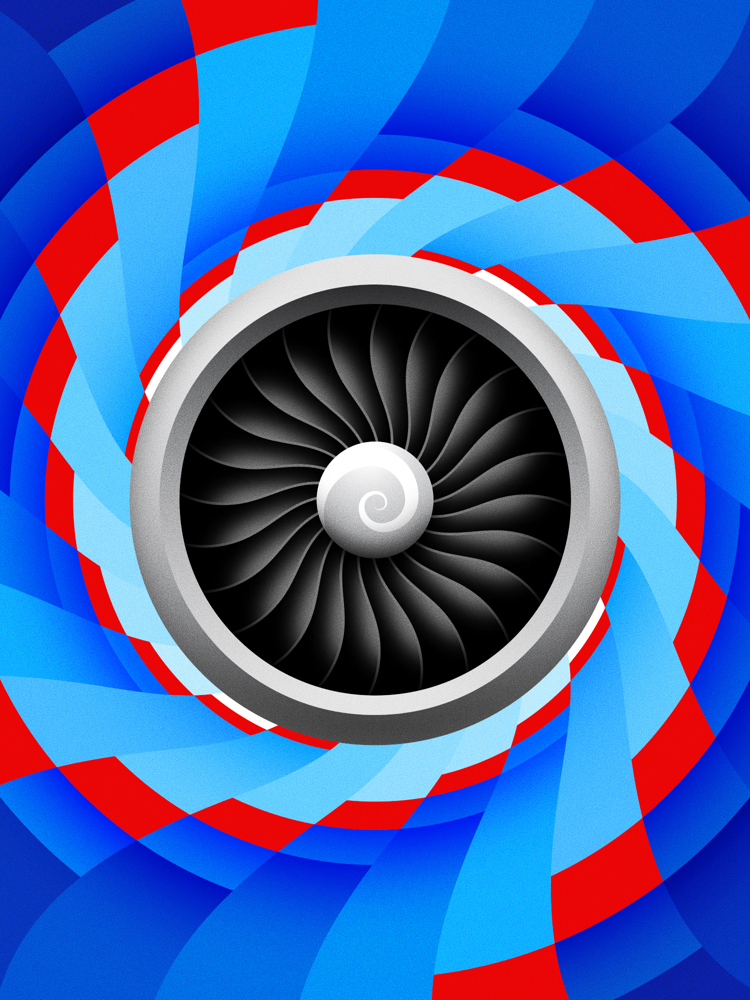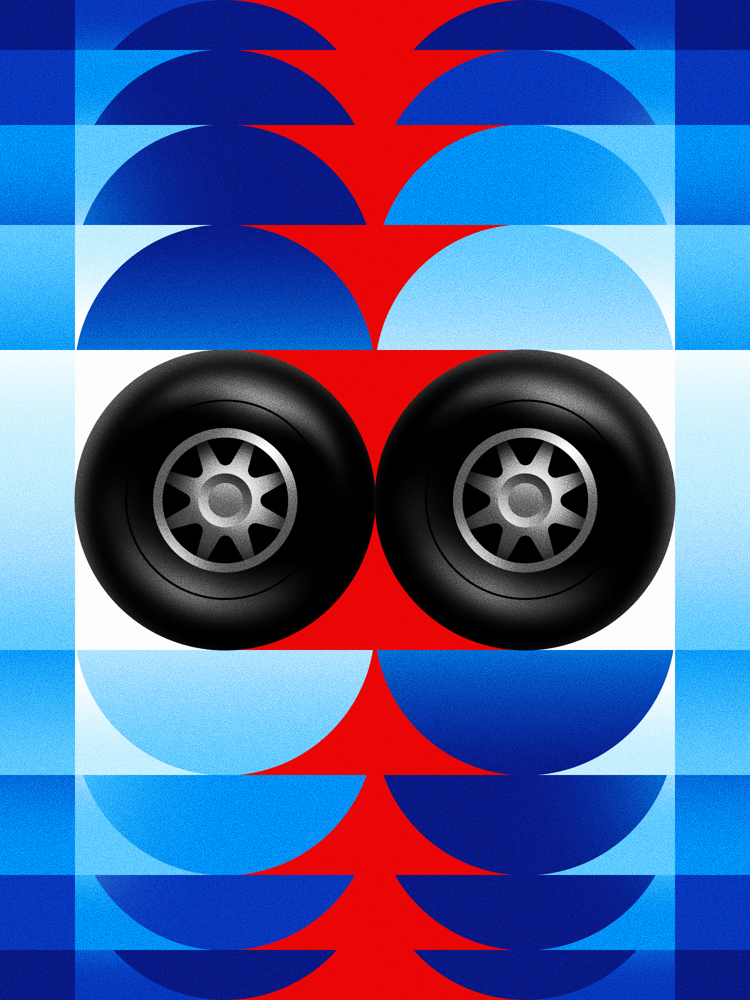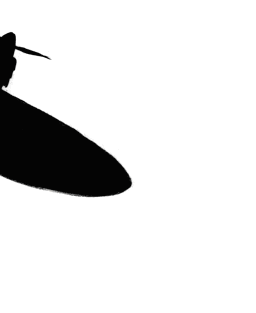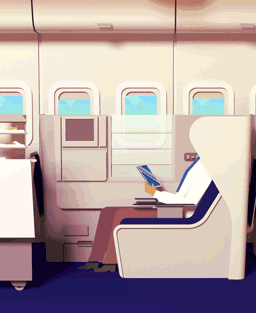

Ask a pilot: what are all those sounds on a plane?
From ding-dongs to ‘dog barking’, the cabin of an aircraft can be a noisy place to be. If you’ve ever wondered what the roars and rumbles mean, British Airways Senior First Officer Al Smith is here to spill all
17/04/2025
Illustration: La Boca
If you’ve ever been on an aircraft, you’re likely to have heard a noise that’s made you sit up and think: “Erm, what was that? What does it mean?” The long and short of it is that aircraft are machines, and machines make noises – sometimes lots of them. Hopefully, I can help normalise what some of them are. So, buckle up and I promise not to get too technical (I’ll try, anyway!).
The ‘dog barking’ noise
Let’s start with a strange one that occurs shortly after ‘pushback’ (when the plane moves rearwards from the gate) This is most commonly heard by those close to the wing. You might be sitting there thinking, “Is it too early for a G&T? We are on holiday, after all,” when suddenly you hear what some people describe as a dog barking. If a noise could sound agitated, it would be this one. It repeats itself for a little while.
In reality, this is the sound of the Power Transfer Unit (PTU). This is a hydraulic motor/pump that provides power to another system of the plane, helping it to move things such as flaps and slats. (See, I told you I wouldn’t get too technical.) The quick in-out-in-out of pressure moving through its system is what makes that barking sound.

Low-high, low-high ding dongs
The next noise is airline- and sometimes aircraft-specific, so you may not always hear it. It’s a low-high ding-dong chime, which consists of two dings and two dongs. This is sometimes referred to as the ‘cabin chime for take-off’, and it does exactly what it says on the tin.
On some aircraft, we press a button to trigger it. On others, we cycle the ‘No Smoking’ signs in both directions twice, which creates the change in tone. This signals to the cabin crew that we’re about to turn on to the runway.
A rumble with vibration
You’ll usually feel this more than you’ll hear it but, if you’ve never experienced it before, it can be quite alarming. Don’t worry – this is completely normal, especially during descent. Imagine we’re heading into London and air traffic control tells us to expedite our descent to 5,000ft. One way we might achieve this is by increasing our rate of descent using the speed brake.
“What’s a speed brake?” I hear you ask. Well, just as a car has wheel brakes, an aircraft also has these brakes, but obviously they make no difference in the air. Enter the speed brake. This is part of the wing that we can extend into the airflow to cause drag. During descent, we use this to stay on the right side of airspeed restrictions while descending more quickly. The noise you hear and the vibration you feel are this being extended. If you’re sitting by the wing in a descent, you may even be able to see it lift up ever so slightly.

The intermittent motor before landing
If you’ve ever sat over the wing before landing, you’ll notice this noise is louder there than anywhere else in the cabin. That’s because it’s coming from the fuselage near the wing. You might describe it as the sound of a motor running for five to ten seconds before stopping, then starting again a few minutes later – sometimes repeating three or four times. The motor is a little machine that converts electrical energy into mechanical energy so we can move things on the aircraft.
In order to fly at slower speeds (essential for take-off and landing), the clever people who designed the aircraft created slats and flaps that change the shape of the wing. The noise you hear is the pilots selecting the next flap setting for landing – we have a lever for this in the flight deck. If you’re sitting in the cabin, you might be right over the noisy motor moving our flaps.

The landing gear
The landing gear is our set of wheels that we use for take-off and landing. As you may have seen on large aircraft, they are quite big pieces of equipment, built to withstand thousands of landings, so it goes without saying that they’re strong, heavy and well-engineered. Moving the landing gear requires a lot of force from the hydraulic system, which, as we’ve already found out, creates plenty of noise.
If you’ve ever been seated at the front of the aircraft during take-off, you might hear the wheels spinning after being retracted. Again, this is totally normal. On some aircraft, there’s a device inside the wheel bay to slow the wheels after take-off and, if you listen carefully, you can sometimes hear it.
Pre-landing bells and whistles
This last noise is usually only heard if you’re sitting right at the front of the aircraft. It could be described as a siren, a bleep, an alarm or a bell – it all depends on the aircraft. But it’s often heard just before landing.
Any guesses what it is? For most of the flight, we operate the aircraft using the autopilot – programming it to do what we want (or what air traffic control tells us to do). However, for take-off and most landings, we disconnect this very useful system and land the aircraft ourselves. The noise you hear is simply the aircraft’s computers saying to the pilots: “Over to you! You have control. Thank you – our work here is done.”
Remember, an aircraft is a huge machine, and machines make noise. Most of these sounds are (say it with me!) completely normal and, after hearing them a few times, you won’t even notice them anymore. So, sit back and enjoy your flight – noise-cancelling headphones optional.
Got an aviation question you’d like to ask pilot Al? Email theclub@cedarcom.co.uk and we’ll try to answer it in a future column





